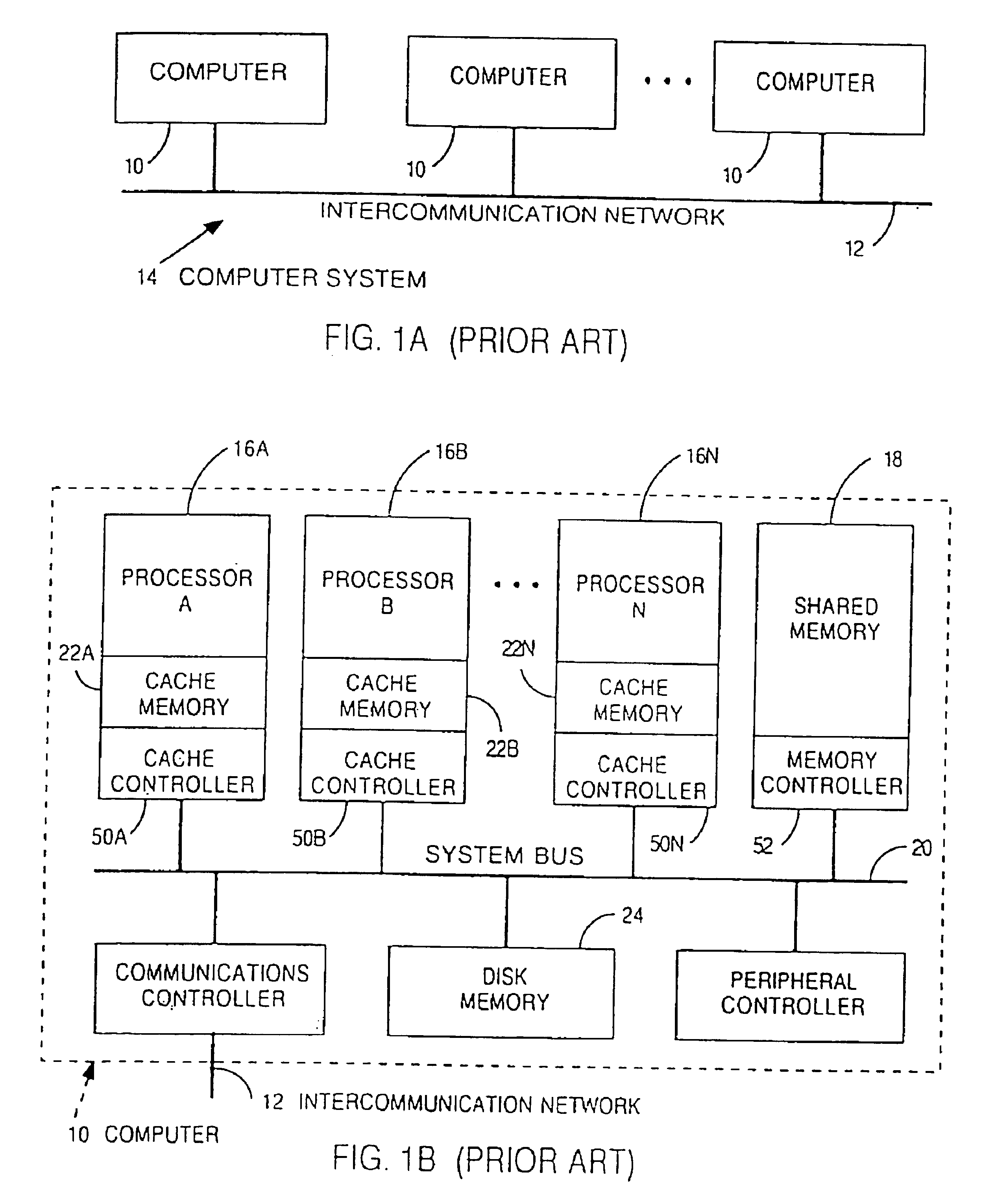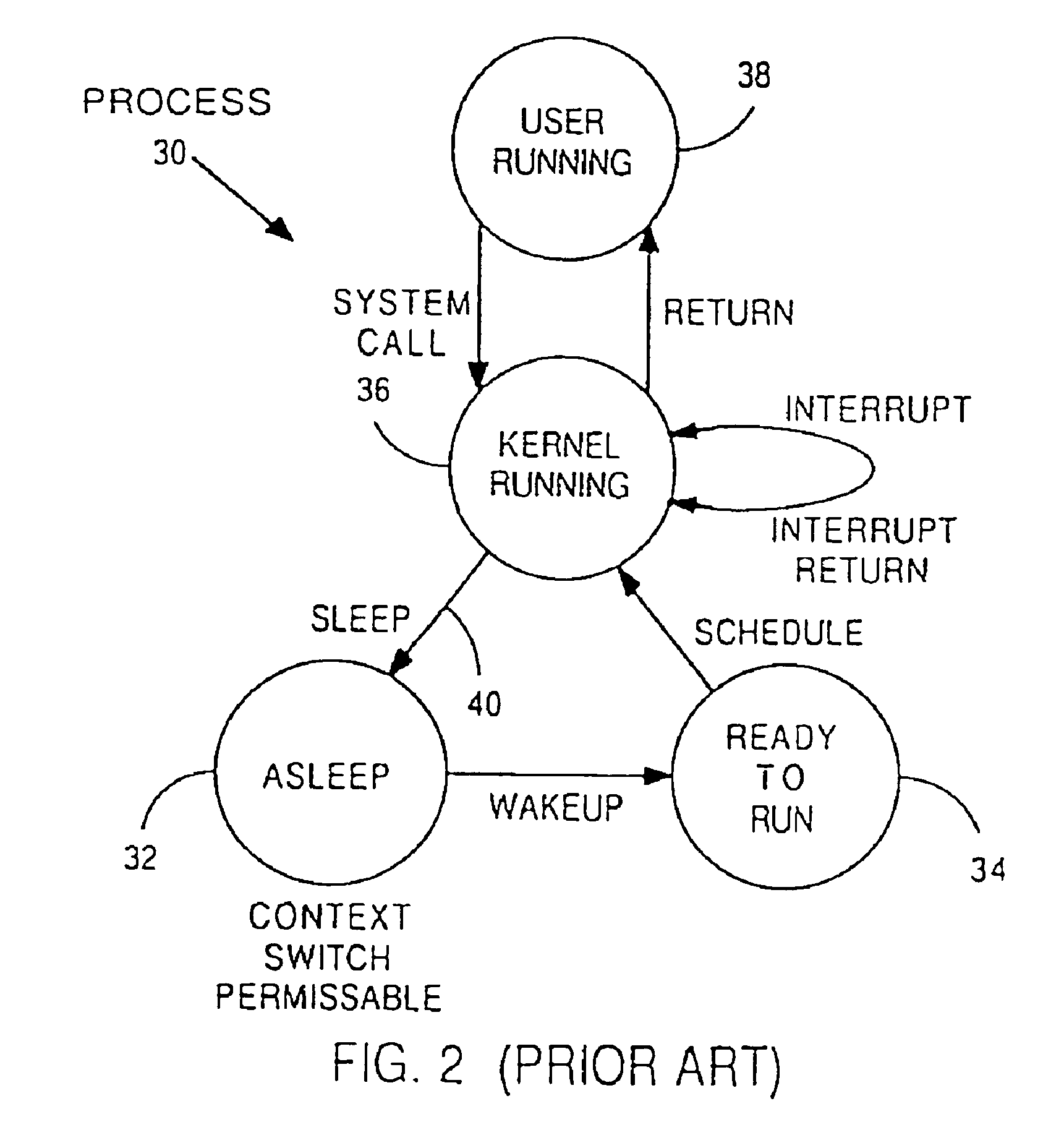High speed methods for maintaining a summary of thread activity for multiprocessor computer systems
- Summary
- Abstract
- Description
- Claims
- Application Information
AI Technical Summary
Benefits of technology
Problems solved by technology
Method used
Image
Examples
Embodiment Construction
[0053]The invention has been implemented within a multiprocessor computer system such as the one shown and described herein. It should be readily recognized from this disclosure, however, that the invention is not limited to this implementation but can be applied in any suitable computer system.
[0054]FIG. 3 shows the interrelationship of components used to implement an embodiment of a mutual-exclusion mechanism 90. Skilled workers will recognize that terms of art used in this application are known in the computer industry. Standard C-programming language syntax is used to describe relevant data structures and variables. Pseudo-code is used to describe various operational steps. The following alphabetically arranged terms are described with reference to FIGS. 1 and 3.
[0055]A CALLBACK 100 is an element of a generation data structure. Each callback 100 tracks a set of elements 102 waiting for safe erasure. Callback 100 may include operational steps specific to a type of element being t...
PUM
 Login to View More
Login to View More Abstract
Description
Claims
Application Information
 Login to View More
Login to View More - R&D
- Intellectual Property
- Life Sciences
- Materials
- Tech Scout
- Unparalleled Data Quality
- Higher Quality Content
- 60% Fewer Hallucinations
Browse by: Latest US Patents, China's latest patents, Technical Efficacy Thesaurus, Application Domain, Technology Topic, Popular Technical Reports.
© 2025 PatSnap. All rights reserved.Legal|Privacy policy|Modern Slavery Act Transparency Statement|Sitemap|About US| Contact US: help@patsnap.com



